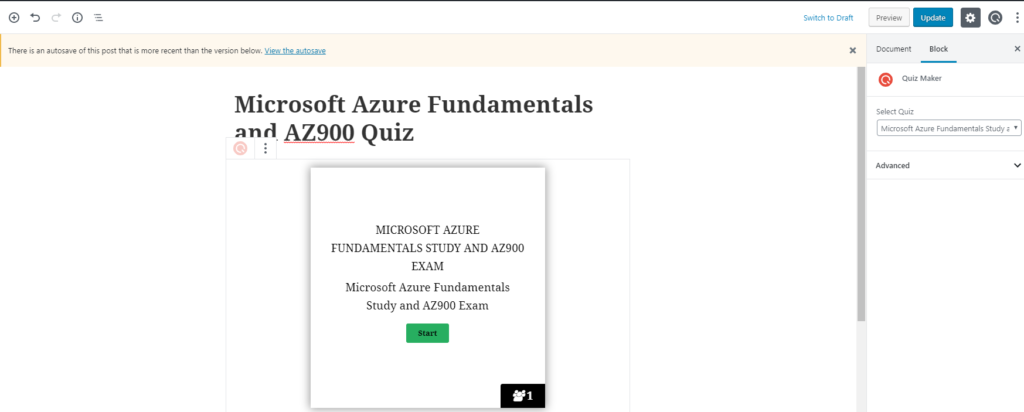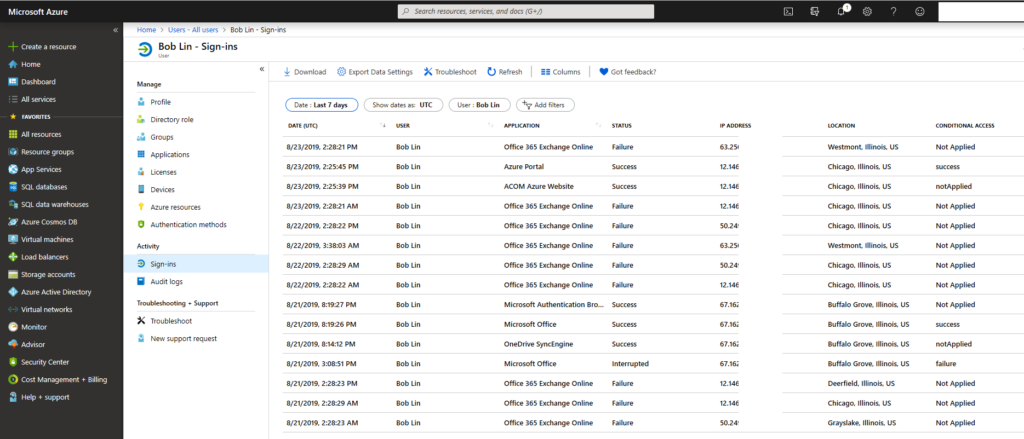Author: Bob Lin
How to create quiz using Quiz Maker
- After installing Quiz Maker Plug-ins, go to Quiz maker>Questions to create questions.

2. Go to Quiz Maker>Question Categories, create Category.
3. Go to Quizzes to add new quiz.
4. Click Quiz Maker and copy the code.
5. Open a New Post.
6. Click + icon and then select Quiz Maker.

7. Select quiz.

8. The quiz is ready for publishing.

Azure Fundamentals Study Summary and AZ900 Quiz – Cloud Concepts Part 1
Benefits of Microsoft cloud computing
It’s cost-effective.
It’s scalable
It’s elastic
It’s current
It’s reliable
It’s global
It’s secure
What are Microsoft cloud computing?
Microsoft cloud computing provides two pricing model: pay-as-you-go or consumption-based.
What’s Microsoft Azure storage?
Microsoft Azure storage is cloud-based data storage. Azure storage provides devices and applications read and/or write data such as:
- Buying a movie ticket online
- Looking up the price of an online item
- Taking a picture
- Sending an email
- Leaving a voicemail
What is serverless computing?
Serverless computing lets you run application code without creating, configuring, or maintaining a server. The serverless model differs from VMs and containers in that you only pay for the processing time used by each function as it executes. VMs and containers are charged while they’re running – even if the applications on them are idle.
How to check Office 365 or Azure Sign-ins status
- Login Microsoft Azure with admin account.
- Go to Azure Active Directory>Users.
- Find the user you want to check the status.
- Click Sign-Ins. You should have the similar window

What’s Docker?
Docker is the open-source project, which is one of the leading platforms for managing cloud containers. With Docker, multiple containers can be run on a single machine, and containers can be moved between machines.
What are cloud containers?
Cloud containers provide a consistent, isolated execution environment for applications without OS to boot and initialize. For that reason, the container can start up quickly. You only need the app to launch.